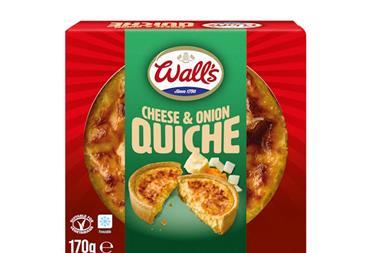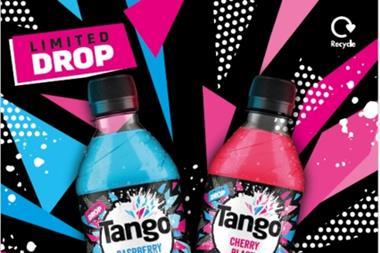Almost a year on from the implementation of plain packaging, fears over a dramatic slump in retailers’ tobacco sales have yet to be realised
It’s been 10 months since the European Tobacco Products Directive 2 (EUTPD2) was enforced on 20 May 2017 and since branded packs, 10s and flavoured tobacco were last stocked on the gantries of UK convenience stores.
The months leading up to the EUTPD2 deadline were a disruptive and tumultuous time for many convenience retailers, so almost one year on, how are they faring now?
Practically speaking, the vast majority of retailers seem to agree that the initial problems associated with finding the correct tobacco brands on gantries have now tapered off as staff and customers alike have grown used to the new packs and planograms.
For some, the legislation has provided an opportunity to redesign store counter layouts with many now reporting some positive outcomes such as better security and more profitable use of the key back- wall space.
Roger Sraw, owner of Today’s Extra in Basingstoke, moved all of his tobacco products from the gantry to draws under the counter prior to the 20 May deadline and says that staff are now coping “well” with the changes.
“We’ve moved all of our tobacco to draws underneath the counter and it’s not really causing any issues. Staff have to bend down to retrieve products, but they aren’t having to turn their backs on the shop floor, which is a good thing as shoplifting has been an issue here in the past,” he says.
After a bumpy start, Charles Brading, owner of Vic’s Stores in Nettlestone on the Isle of Wight, says his staff are also adjusting well to the changes, although speed of service is still somewhat affected by plain packaging. As a result, he’s planning to install a new automated gantry next month.
“Plain packaging was a bit of a nightmare when it first came in. Although we have now got used to it, service times are still slightly slower than before, which I don’t like, especially at busy times. As a result, we are having a new automated gantry fitted next month which promises to speed up service as the correct tobacco brand will be dispensed down a chute at the touch of a button.
“It will also put an end to staff turning their backs on the shop floor while they look for brands on the gantry. I’ve always felt uneasy about that due to the risk of shoplifting,” he adds.
According to Imperial, 86% of factory-made cigarettes (FMC) and roll-your-own (RYO) packs bought in 2016 are now not sold post the introduction of EUTPD2 and standardised packaging, meaning many adult smokers have had to re-evaluate their tobacco purchases as their preferred pack has disappeared.
However, despite this shocking statastic, many retailers are reporting relatively stable volume and value sales year on year.
Roger’s tobacco sales have remained steady year on year. “We certainly haven’t seen the decline that we were initially worried about,” he says.
Manny Patel of Manny’s in Long Ditton, Surrey, has had the same experience. “Tobacco sales are steady in our store. Year on year we’ve seen no decline, even in January when people tend to try to cut down or quit.”
Jamie Patel, owner of Weybridge News in Surrey, is reporting a similar story. “Tobacco sales haven’t really been affected by the legislation yet; they are pretty steady year on year,” she says.
In fact, a number of stores which have invested in staff training and robust category management are even reporting a rise in tobacco sales since EUTPD2 came into force. Take the Costcutter store at London’s Brunel University, for example. “Unbelievably, our tobacco sales have actually grown since the law was enforced,” says store manager Arnaud Leudjou.
“The government thought that banning small cigarette packs and RYO pouches would deter people from smoking, but here it seems as though the opposite is happening.
“Smokers are now buying the larger packs and because they have more cigarettes on them, they are just smoking more. The volume and value of our tobacco sales are both up on this time last year,” he adds.
“We received a lot of support from Costcutter and the tobacco manufacturers themselves so the process of bringing in the changes was relatively straightforward.
“We now have quite simple planograms and stickers on the gantry that help staff to locate products as quickly as possible.”
But not all stores share Arnaud’s experience. Bipin Harria, owner of Seaford News in East Sussex, says he has noticed a “subtle decline” in tobacco volumes since the start of the year. “But revenues are up due to the larger pack sizes,” he adds.
Bipin blames increased price competition, from the illicit trade and also from other high street retailers, for the decline. Adult smokers’ continued drive towards value for money is prompting lots of stores, including some of the multiples, to sell below rrp, he says.
“The illicit trade is undoubtedly having an impact, but in my store increased local price competition is also largely responsible,” he adds.
“There’s a Co-op next to me that I know is selling cigarettes for 20p a pack less than I am. Consumers are so price savvy when it comes to tobacco and loyalty goes out the window if they know they can buy it cheaper elsewhere.
“I already sell my tobacco at the rrp and I can’t drop my prices any lower than that – the margins are low enough as it is.”
Adult smokers’ demand for value for money is certainly making itself felt in Manny’s store, too. “Value for money remains the dominant driving force for sales. People just ask what my cheapest cigarettes are and more often than not just buy those, regardless of the brand,” he points out.
The general trend towards down-trading is being seen across both factory-made cigarettes and rolling tobacco, with sub-economy (the lower-pricing tier) brands continuing to enjoy the largest share of the FMC market, Imperial says. “This was almost 50% of all FMC sales in November 2017,” Imperial’s Miller says. Some Imperial brands within this sector include JPS Player’s and Carlton, which represent Imperial’s lowest-priced FMC offerings.
“Smokers are just as price savvy as ever, perhaps slightly more so now,” asserts Jamie Patel of Weybridge News. “We have our regular customers who come to us day in, day out, because they know what price they will pay at our store so we always stick to rrp for those,” she adds.
Andrew Miller, head of field sales at Imperial Tobacco UK, agrees with Jamie’s market assessment: “Many consumers have become more price-conscious than ever, meaning an increased reliance on the expertise of retailers and their staff when it comes to recommending products that offer the best value for money.
“Pleasingly, an increasing number of retailers are resisting the temptation to premium price for a quick short-term gain, and instead focusing on the long-term sustainability of their business. The savviest wholesalers and convenience store owners ensure their prices are pitched at rrp or below, allowing them to compete with the multiples and prevent their customers from beginning to look elsewhere for tobacco.”
Not all retailers are on board with this course of action, however, and one who has chosen to go his own way with regards to tobacco pricing post-EUTPD2 is David Worlsfold, owner of Farrants in the affluent Surrey village of Cobham. “The removal of PMPs has actually helped us,” he says.
“Smokers have no real reference point for pricing now. They don’t really know what the price should be, and every shop seems to sell the same brand for a few pence difference. There’s so much variation in the marketplace so I add 3% to my margin.
“The vast majority of my customers don’t notice or don’t care. If I do get customers who complain that it’s cheaper in the Sainsbury’s Local next door I’d tell them to buy it there then. I’ve had to become pretty ruthless. I’m not interested in being the shop that sells the cheapest tobacco on the high street. That’s not what we are about.
“EUTPD2 also allowed us to flush out a lot of stock that wasn’t really earning its place on the shelf. We stopped buying in 10s in October 2016, well ahead of the deadline, even though there was still latent demand in the market. I had to just grit my teeth and say no and it was better in the long run as I sold through absolutely everything before the deadline came.”
The arrival of EUTPD2 hasn’t all been plain sailing, though. The ban on characterising flavours did at first cause quite a bit of upset for some adult smokers, David says. “There’s no doubt that the EUTPD2 hurt us tobacco specialists who relied on unique flavours and products to create a point of difference when it first hit, and we did lose some customers who had been thinking of quitting for a while, or had been trying. For those people it just wasn’t worth the hassle anymore.
“However, we probably gained just as many new customers who started coming to buy tobacco from us as a result of the confusion and service issues that they encountered in the multiples. When they come to an independent store like ours they know that they will be served by specialist staff who understand the category and the changes and won’t accidentally sell them the wrong packs,” he adds.
Imperial’s Miller agrees that retailer expertise and product knowledge is now key, and one of the independent retail trade’s big advantages.
“Retailer advocacy has become more important than ever in a dark market with standardised packs, with manufacturers now restricted in terms of traditional opportunities to market both new and existing brands and products,” he says.
David’s unique ability as an independent to react almost instantly to changing market trends and keep customers informed of new products that interest them is demonstrated by one of the newest additions to his range: flavour cards.
“Innovative suppliers were very quick to think outside of the box once the EUTPD2 banned RYO and cigarettes with characterising flavours, and already there is a range of flavour sprays and oils that can now be bought individually and added to plain RYO to flavour it, as well as flavour cards and inserts that you can add to packs.
“My customers tell me that these are just as good, if not better, than original flavoured tobacco. There’s also a much wider range of flavours for adult smokers to choose from, too. For example, we can now get vanilla cherry flavour cards for RYO tobacco, or even bubblegum. Those options never existed before EUTPD2 so in that sense the legislation has backfired somewhat,” he adds.
Innovation
Imperial recently announced three enhancements to its JPS factory-made cigarette (FMC) range, which launched in January 2018.
JPS Real Blue filter upgrade
Imperial’s new ‘Firm Filter’ technology has been applied to all JPS Full Flavour variants, enhancing the smoking experience by retaining the perfect shape, a key feature requested by consumers.
JPS Silver becomes ‘JPS Silver Stream’
JPS Silver’s previous filter tip has been superseded by Imperial’s ‘Smooth Filter’, featuring unique flow channels to deliver “an exceptionally smooth” smoke. JPS Silver Stream also features paper designed to create less smoke.
JPS Green becomes ‘JPS Green Edge’
JPS Green Edge features a menthol inner liner within the packaging that is more effective at transferring flavour to the cigarettes than traditional menthol tips.
Imperial Tobacco brand manager Tom Gully says: “These innovations to the JPS portfolio demonstrate how Imperial is leading the way in the tobacco category, delivering sophisticated product innovation in a post-standardised packaging environment that meets the needs of our consumers and delivers continued profitability to our retailers.”
The company has also recently added Rizla Natura – a new, responsibly-sourced product – to its rolling papers and accessories portfolio. Gully says it’s a new approach to papers and tips crafted from hemp, designed to provide adult smokers with an authentic smoking experience.
Cigars
Total cigar sales in the 12 months to 31 December 2017 fell by 7.3 % to 286.6 million cigars compared with last year, new figures compiled for the Scandinavian Tobacco Group show. Most of the decline can be attributed to the small/panatella size segment, which saw an 11.6% decline in the year to December 2017. Miniature cigars still continue to dominate the market with 71.5 % of the total cigar volume and a value of £99.4m, with STG UK’s miniature brands contributing 70% of the value sales in this segment.
The implementation of EUTPD2 has had an impact on sales and while there remains “quite a bit of disturbance” in the market, current figures are now tracking a lot better, Jens Christiansen, head of marketing & public affairs at STG UK, says.
In the UK market “blue” products such as Café Crème Blue and Moments Blue, which offer consumers a smoother smoke, are leading sales and bucking the trend seen across the rest of Europe where filter and flavour are king, Christiansen adds. And as with the wider tobacco category, the value-for-money trend remains “unstoppable”.
STG UK launched Moments Panatella in 2017 as it sought to re-invigorate the small cigar segment. Available in an original variant in packs of five with an rrp of £4.20, the brand remains the cheapest product on shelf within the small cigar segment, STG says. “Price continues to be a major focus for shoppers and we believe with the right product, there is a huge opportunity for the small cigar segment to capitalise on this demand for value and drive growth back into the category,” Christiansen adds.
“By harnessing the strength of the Moments brand, we see a gap for a value-for- money proposition that we can fill with Moments Panatella and drive growth back into small cigar segment.”
Expect vape shops on every high street
There will be vaping retail outlets on most high streets in the UK over the next two years as national chains establish themselves, according to the sector’s leading trade body, the UK Vaping Industry Association (UKVIA).
The vaping sector is forecast to grow to a £4bn-plus industry in the UK by 2021, according to UKVIA, which estimates that there are now more than 2,000 stores across the country. This figure is “likely to grow exponentially” over the next three years as retail brands embark on major store investment programmes, it says.
UKVIA board member Doug Mutter says: “While only 10 years old as an industry, vaping is now big business and significant retail brands are beginning to emerge, taking vaping shops from the back street to the high street.
“The recent campaign by Public Health England – the first of its kind to promote vaping – and the government’s Tobacco Control Plan, which reinforced the role that vaping has to play in getting smokers to quit, have both been a massive boost to the industry.”
Vaporized, where Mutter is the manufacturing and compliance director, was formed five years ago and already has a portfolio of 105 outlets, with a further 30 planned by quarter two of 2018.
E-liquid manufacturer Vapouriz is also expanding its retail portfolio. The company opened its first retail store in 2014 and launched its franchise programme earlier this year. The business now has eight stores trading under the Vapestore brand, including its relaunched Guildford flagship store in Surrey, which features a Vape Bar and Vape Vault. The company plans to open further company-owned stores and franchised operations in 2018.
Vaping
The total UK vaping market is currently considered to be worth more than £1bn, with ‘traditional retail channels’ including convenience stores accounting for just shy of £160m, according to Imperial Tobacco data for the year to 25 October 2017.
However, value sales within traditional retail channels appear to be stalling as consumers gain confidence in the category and purchase via alternate channels such as vape stores and online, Sophie Hogg, head of next generation products for Imperial Tobacco, says.
Her words are backed up by new data recently published by Public Health England which show that specialist vape shops are now “the most popular place of purchase with approximately 40% of sales now occurring here”.
Retailer Bipin Harria of Seaford News is feeling the impact of the trend. “Sales have dipped in our store due to the vast proliferation of vaping shops and other outlets that now sell e-cigs too.
“Even the pound shop across the road sells e-liquids so shoppers have so much choice. I think it remains quite a murky category for retailers, though. There are still so many brands, flavours and battery sizes to choose from so it’s hard to know where to start and what to stock. I just stick to three brands: Blu from Imperial; Logic from JTI; and one other independent brand.”
A good place to start is to “begin with a small range and work with your rep to understand the broader category,” Imperial’s Hogg adds. “For instance, new entrants will likely be looking for a high-quality product that gives them a smooth entry into vaping and comes from a trusted brand.”
Existing adult vapers, meanwhile, will be looking for brands that offer a premium, high-quality vaping experience, JTI’s head of marketing Stephane Berset says. “While there are lots of brands currently available, as the market matures, existing adult smokers and vapers will look for brands that offer a premium, high-quality vaping experience. Similarly, retailers will be looking for high-quality products to stock in store,” he adds.
“While 75% of adult vapers currently use a refillable device (1.5m adult vapers), the number of vapers using a capsule device continues to grow, JTI points out
In fact, according to JTI, capsule devices and refills have increased in value sales by 54% year on year and e-liquid bottles have increased in value sales by nearly 29% year on year.
Consumer flavour preferences are also evolving and have moved on dramatically from the traditional tobacco flavours that were the clear bestsellers in the early stages. According to new data published by Public Health England, the most popular groups of flavours among current e-cigarette users are fruit (29%), tobacco (27%) and menthol or mint (25%).
“Vapers are now invested in a much broader range of flavours, including fresh, fruity, earthy and savoury tastes – experienced in a variety of different and lower (including zero) nicotine strengths,” Hogg adds. “It is because of this that e-liquids are a now an essential driver of category growth.”
“They account for almost half of the entire vaping category (45%), with value sales increasing by 39%. This significantly outpaces the growth seen in devices and, with no sign of the trend abating, offering a compelling range of e-liquids should be an important area of focus for any independent retailer.
E-liquid developments
JTI’s vaping brand Logic extended its product range with new lower-strength (6mg) Logic LQD e-liquids in December.
The expanded LQD range now includes 18mg, 12mg and 6mg strengths and is available in tobacco, menthol, cherry, berry mint and strawberry flavours.
The 6mg Logic LQD e-liquids, which offer a three-step child resistant mechanism, are available in all channels with an rrp of £5 and can be used with any refillable device.
Vaping brand Blu from Imperial Tobacco expanded its portfolio of e-liquids with eight new flavours in November.
These new flavours complement the existing range of five Blu e-liquids, and will further enhance consumers’ Blu vaping experience.The new flavours are available in 10ml bottles in both zero and 0.8% nicotine strength.
The new flavours are: tropic tonic, with flavours of pineapple, mango & passionfruit; vanilla crème; peach passion; berry swirl; mint chocolate; and green apple.
Caramel café and polar mint – a fusion of peppermint and spearmint – are also available in a nicotine strength of 1.6%.
Each 10ml e-liquid bottle has an rrp of £4.99.
Blu recommends a wide range of fresh, fruity and savoury flavours along with classic tobacco tastes.
“Providing a strong range of flavours like these, complemented by the right range of nicotine strengths, will help retailers retain existing customers, attract new ones and foster their e-liquid sales revenues,” Hogg adds.
The past year has also seen an increasing media buzz around the heat not burn sector (HNB), thanks largely to the arrival of Philip Morris’ IQOS device in the UK. IQOS is an electronic device that heats tobacco without burning, generating a nicotine-containing vapour that yields less smell and on average less than 10% of the levels of harmful constituents found in cigarette smoke.
The category was given a further boost earlier this year when influential advisory panel The Committee on Toxicity told the government that HNB products posed much less of a health risk to smokers than conventional cigarettes.
However, despite the hype, HNB products remain “niche”, Blu’s Hogg adds. “Japan (where vaping is banned) is arguably the only market where they have enjoyed a significant sales impact at this time,” she says.
“However, as confirmed in Imperial Brands’ recent Full Year Results, if a similar demand begins to develop in other markets – including the UK – we will potentially seek to enter the sector as well,” she adds.
JTI is similarly cautious about HNB at this time. “Our insights team closely tracks market trends, allowing us to match new product demand to meet consumer demand,” Berset adds.
“Currently, we see that demand in the UK remains for refillable and capsule devices, which is why we will continue to invest in our Logic LQD and Logic PRO products in 2018.
“Our goal in reduced risk products is to provide consumer choice through a variety of innovative and potentially reduced-risk products including both e-cigarettes and heated tobacco. The latter includes JTI’s Ploom TECH, which has been successfully launched in Japan and Switzerland and we will continue to monitor the UK market.”



























No comments yet